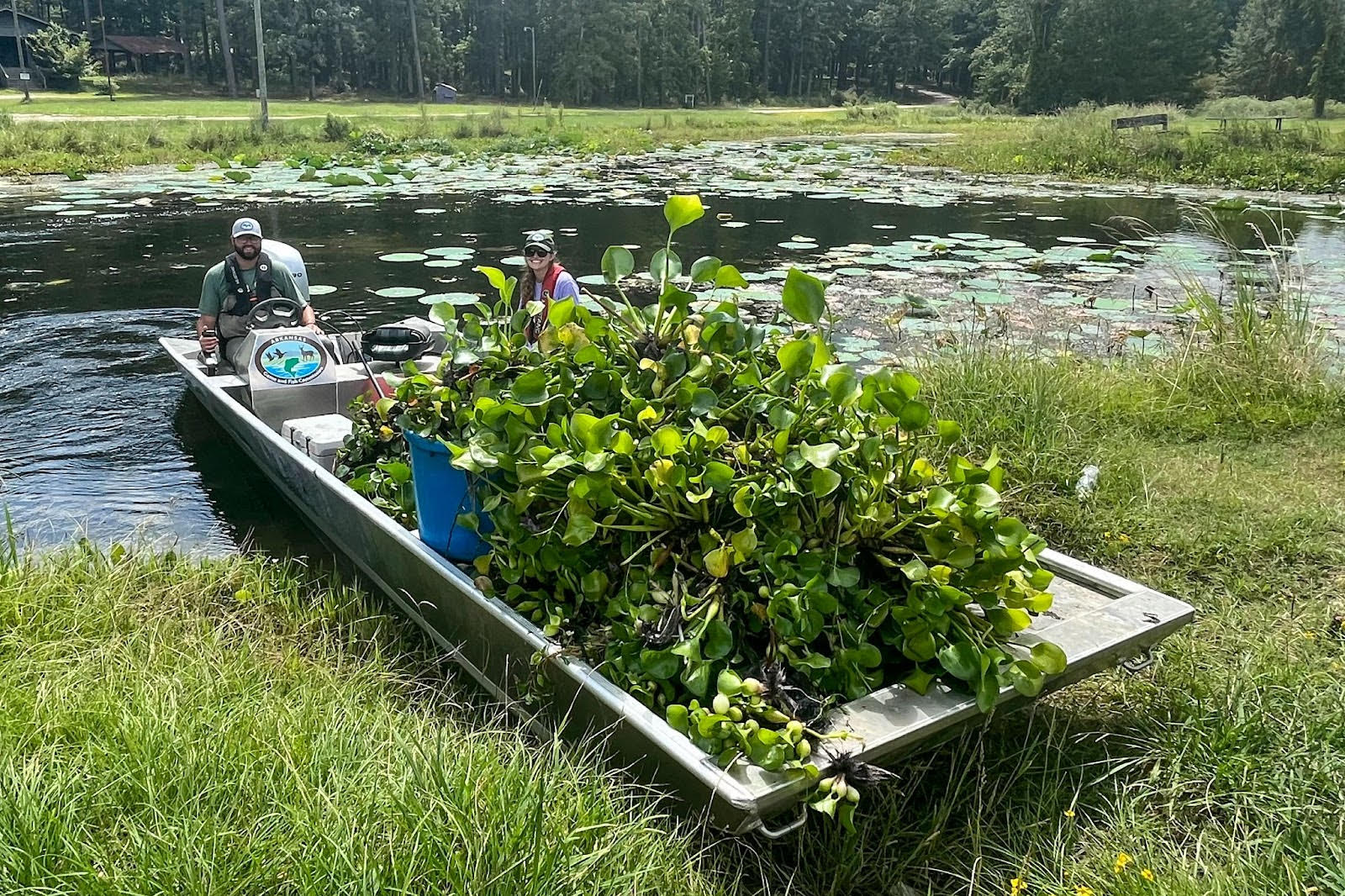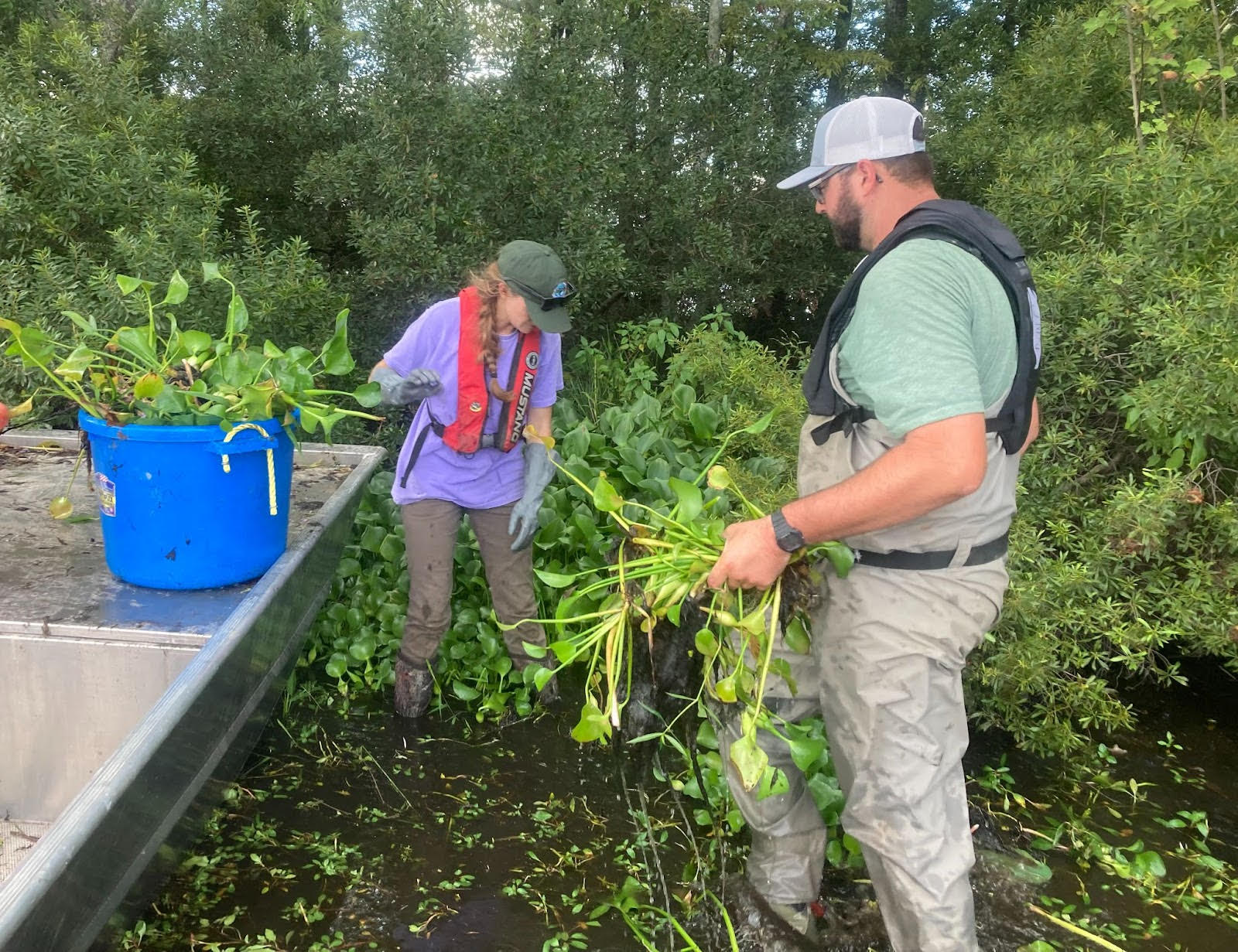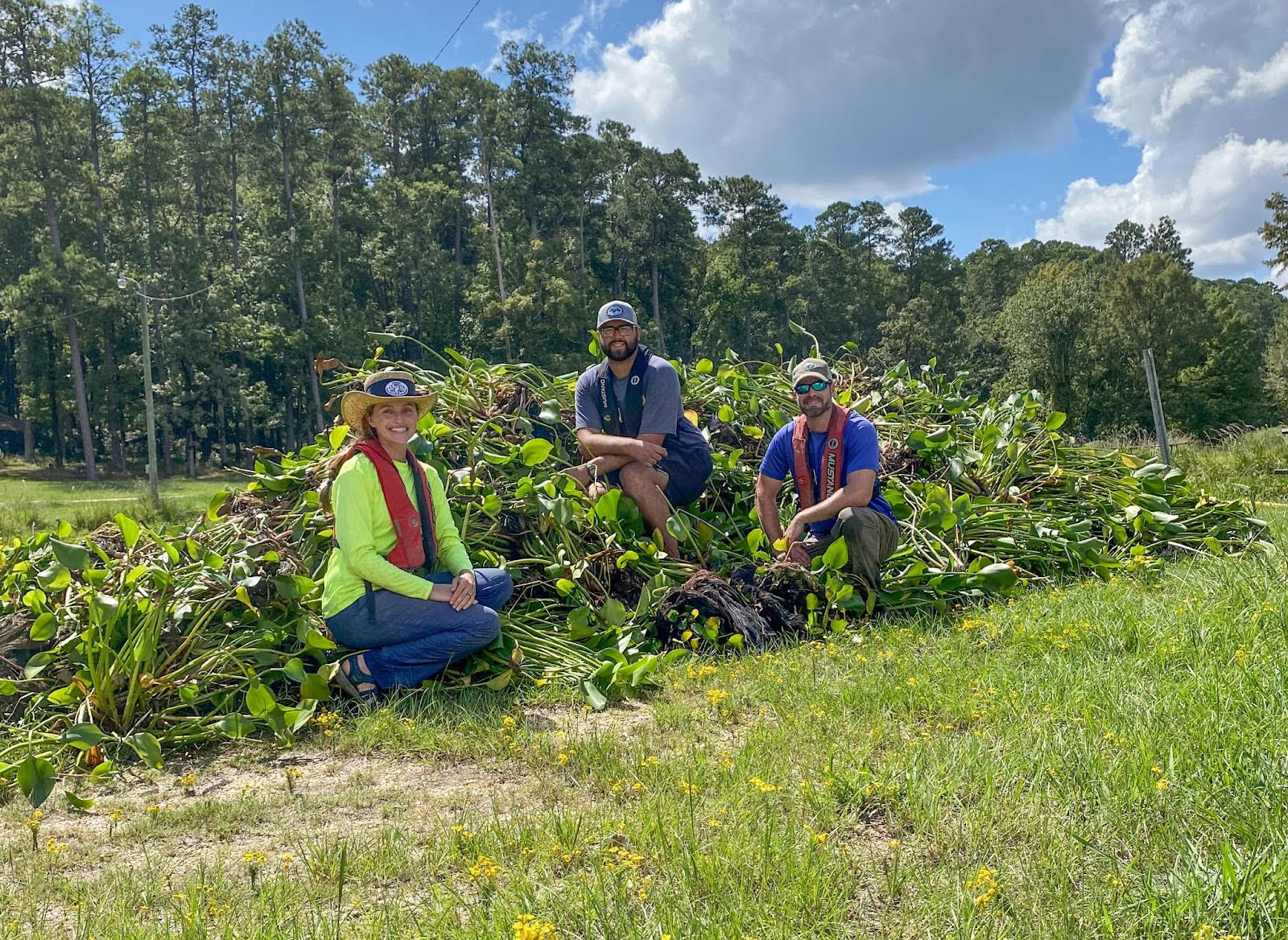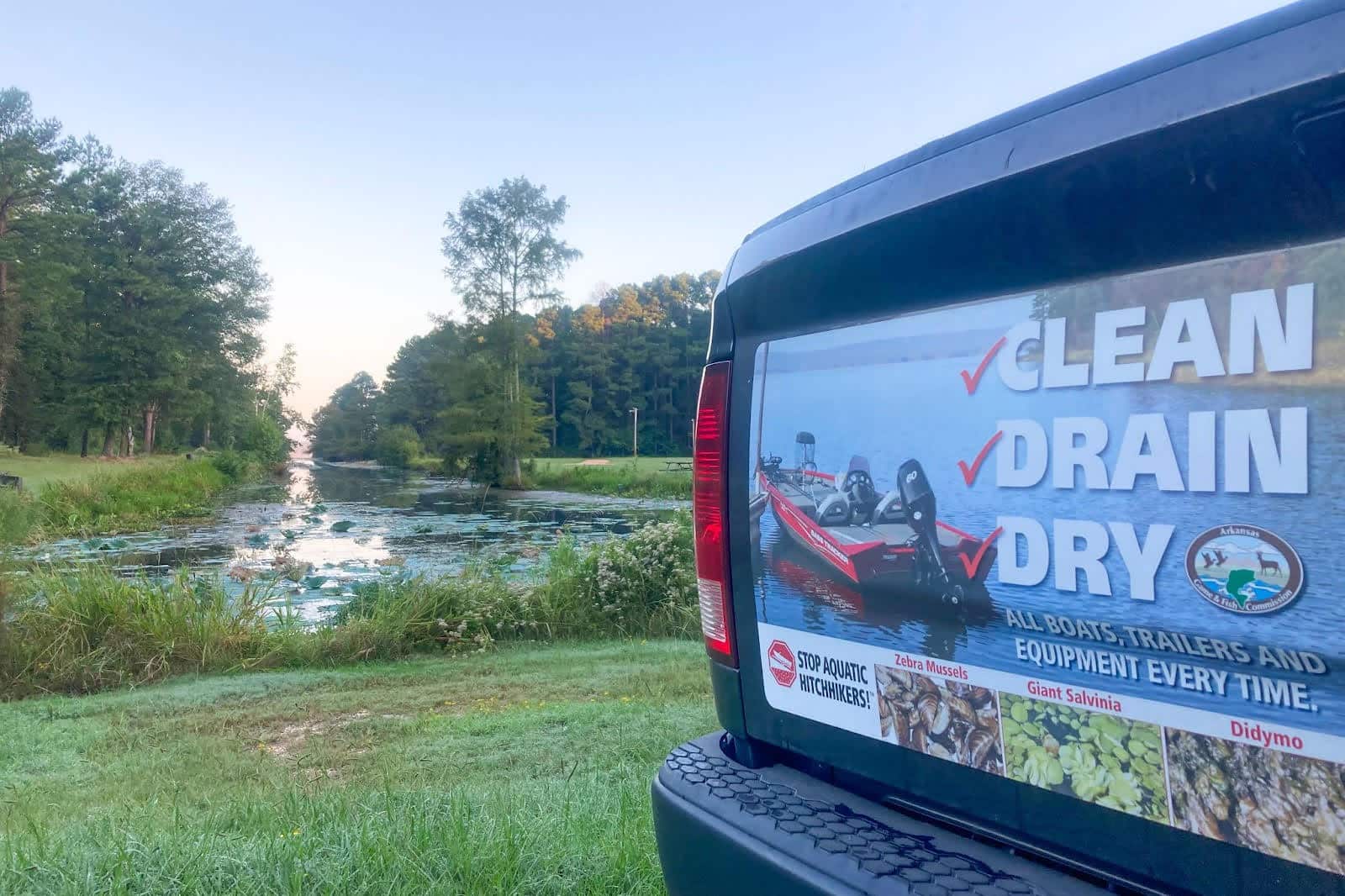Early detection stops two alien invaders in their tracks, Lake Georgia-Pacific boat access reopened
ON 09-20-2024

CROSSETT — A recent infestation of Lake Georgia-Pacific in Ashley County by aquatic nuisance species has been eliminated thanks to swift decisions and hard work by Georgia-Pacific and the Arkansas Game and Fish Commission.
AGFC staff removed dozens of boatloads of water hyacinth, an invasive species native to the Amazon Basin of South America that is known for choking out fisheries and boat access if left unchecked.
“We initially found the plant early this week in the canal leading from the boat ramp to the main lake,” Matt Horton, Aquatic Nuisance Species Program Coordinator for the AGFC, said. “Georgia-Pacific owns the lake, so we worked with them to ensure everyone was on the same page with a temporary closure of the boat ramp and elimination of the harmful plants.”
Once biologists got to work, they found three additional areas in the main lake that were infested with the plant.

“We were able to physically remove all the plants found in our surveys,” Horton said. “But we also found Cuban bulrush growing on the hyacinth. It’s another invasive that typically grows on top of floating aquatic plants and was likely introduced with the hyacinth.”
Horton says Cuban bulrush is found in many southern states but this is only the second documented occurrence of the plant in Arkansas.
“It spreads from seeds and plant fragments and lakes Georgia-Pacific and Erling are the only two known locations in Arkansas,” Horton said. “With GP’s approval, we’ll begin spraying herbicide for this plant in the next week to ensure that it does not get a foothold in the lake either.”
Aquatic nuisance species, such as water hyacinth and Cuban bulrush, pose a significant threat to all Arkansas waters. As with most other invasives, the best way to fight these alien invaders is to prevent unknowingly transporting them to new bodies of water and spreading the infestation.

Any boater, whether they are a fisherman, duck hunter, paddler or pleasure boater, should be aware of the dangers of spreading invasive plants like water hyacinth and Cuban bulrush.
“It’s not just a threat to our boating access for hunting and fishing, it’s also illegal,” Horton said. “The state of Louisiana spends nearly $9 million a year spraying aquatic nuisance vegetation. That’s all money that could go to improving habitat and access, wasted.”
Boaters are advised to remember the mantra, “Clean, Drain and Dry” any time they visit a new body of water.
-
Clean — Remove all visible plant matter from equipment before leaving the body of water.
-
Drain — Let all water from the boat and motor drain completely before transporting.
-
Dry — Let everything dry for at least five days before entering a different body of water. If you are unable to dry, washing with high-pressure, hot, soapy water also can help.
“You especially need to practice clean, drain and dry if you’ve visited a lake or river known to have an invasive species, but it’s a good practice to perform these steps any time you go from one lake or river to another,” Horton said. “There may be some aquatic nuisance species in those places that just haven’t been reported yet, and with the cost these invasives can bring in damages and maintenance, those extra few minutes to pull plugs and clean off your boat and equipment really isn’t much to ask.”

Visit www.agfc.com/ans for more information on aquatic nuisance species and the threat they pose to Arkansas waters. The site features a reporting form to contact the AGFC if you encounter one of these plants or animals that wreak havoc on fisheries if they become established.
####
CUTLINES
BOAT
AGFC biologists tote one of many boatfulls of the aquatic nuisance species water hyacinth from Lake Georgia-Pacific. Photo by Matt Horton.
REMOVING WEEDS
Eradicating water hyacinth involved removal of the plant by hand wherever it was found. Photo by Matt Horton.
PILE OF PLANTS
Several hundred cubic yards of water hyacinth were removed from Lake Georgia-Pacific and destroyed. Photo by Matt Horton.
TRUCK SIGN
Clean, Drain and Dry is the best method to prevent future outbreaks of invasive species in Arkansas waters. Photo by Matt Horton.
Recent News
Subscribe to Our Weekly Newsletter E-mails
Don’t miss another issue. Sign up now to receive the AGFC Wildlife Weekly Newsletter in your mailbox every Wednesday afternoon (Waterfowl Reports are published weekly during waterfowl season and periodically outside the season). Fishing Reports arrive on Thursdays. Fill in the following fields and hit submit. Thanks, and welcome!


